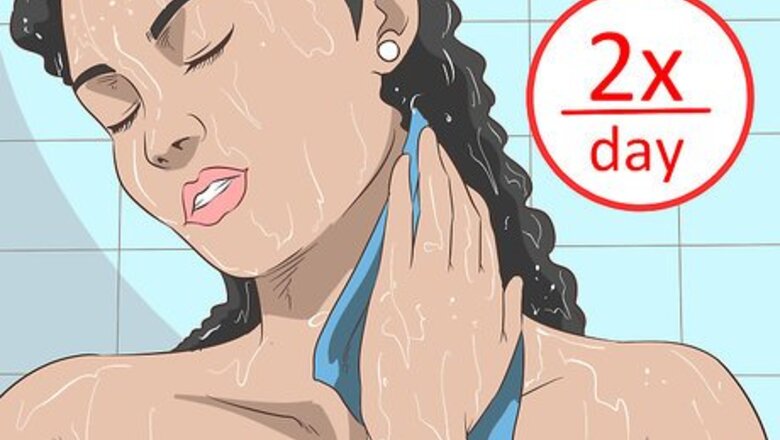
views
Cleansing Your Neck
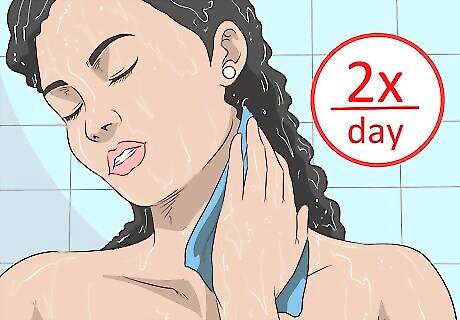
Wash your neck at least twice a day. Keeping your neck clean can be one of the best ways to get rid of neck acne. Wash your neck with a mild soap and warm water at least twice a day. If you work out, shower immediately after to rinse away acne-causing bacteria.
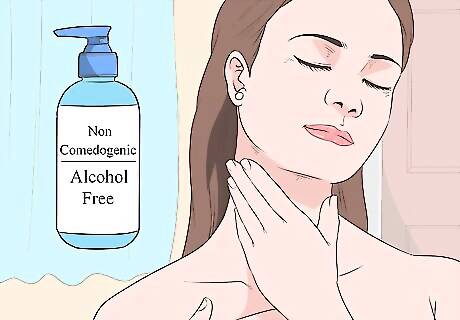
Use a gentle cleanser to clean your neck. Find a gentle cleanser that is labeled as “non-comedogenic” or “oil-free” to use on your neck. Products that are non-comedogenic don’t clog your pores, which can help prevent breakouts. Check the label to be sure that a product is non-comedogenic. Check to make sure that the products you buy are alcohol-free as well. Alcohol may irritate your neck acne and make it worse.
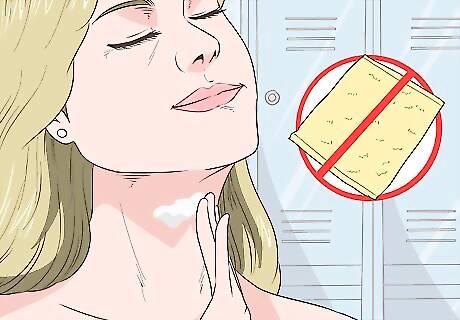
Apply cleanser to your neck using only your fingers. Do not use a washcloth, sponge, or other abrasive materials to apply cleanser to your neck because this can cause irritation, scarring, and worsen the existing acne. Instead, use your fingertips to gently apply the cleanser to your neck. Do not scrub aggressively. Rinse your neck well after you finish washing it. Pat your neck dry with a clean cotton towel.
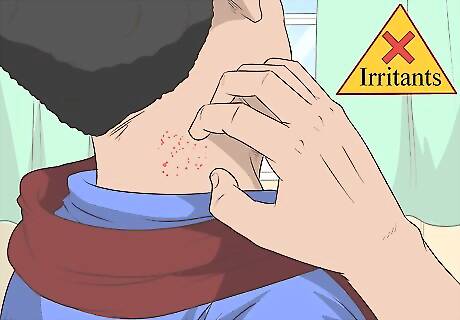
Avoid irritants. Clothing or accessories, like tight straps or belts, may worsen or contribute to your neck acne. Avoid tight collared shirts, scarves, and turtlenecks, as these may irritate the acne. Make sure anything that touches your neck is clean. Avoid picking, scratching, or squeezing your acne, as this can cause scarring. Try not to use oily sunscreens, foundation, or makeup on your neck to avoid clogging your pores. If you use a hairstyling product that contains a lot of oil, make sure it doesn't come in contact with your neck. If you have long hair, the oil from your hair may be getting on the back of your neck. Try wearing your hair up in a ponytail while you treat your acne.
Using a Sea Salt Treatment
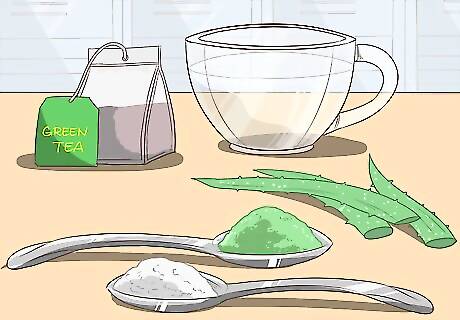
Gather your ingredients. Making a sea salt treatment is easy and the ingredients are available in most grocery stores. In moderation, sea salt can dry out acne while tempering inflammation. Sea salt has also been found to have some microbial properties. To make a sea salt treatment, you will need: 1 cup hot water 1 teaspoon sea salt Green tea bag and/or 1 – 2 tablespoons aloe vera
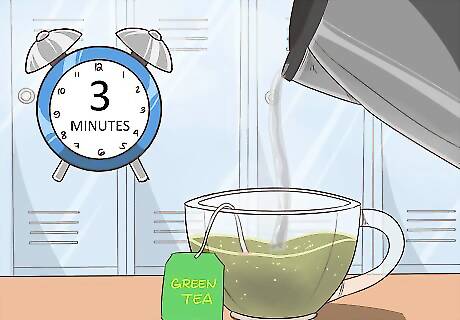
Brew a cup of green tea. Green tea extract has been found to be beneficial for the treatment of acne. Using a cup of brewed green tea as a base for this treatment may also help. You can either use one teaspoon of green tea leaves in a tea infuser or use a green tea bag. Place the tea bag or infuser into a mug. Then, boil some water and pour about 1 cup of water over the green tea. Let the tea steep for about three minutes and then remove the tea bag or infuser.
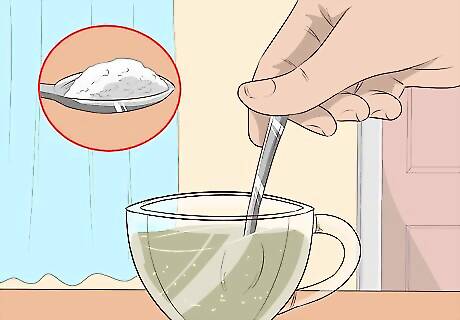
Dissolve 1 teaspoon of sea salt in the tea. Measure out 1 teaspoon of sea salt and add it to the cup of tea. Stir the sea salt until it completely dissolves in the tea.
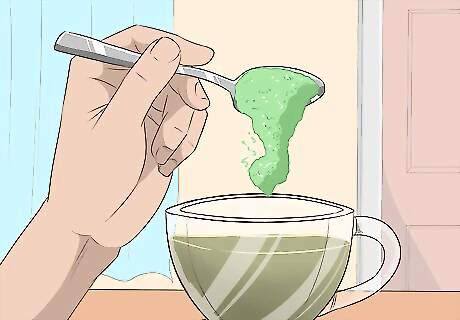
Add a tablespoon of aloe vera. Aloe vera has an anti-acne effect and moisturizing properties. You can add this instead of the tea, or try combining the green tea and aloe vera into one mixture. Add 1 tablespoon of aloe vera to the sea salt solution and stir well. If you want to skip the green tea and only use aloe vera, mix 2 tablespoons of aloe vera gel with 1 tablespoon of sea salt. This will make a scrub that you can apply directly to your neck.
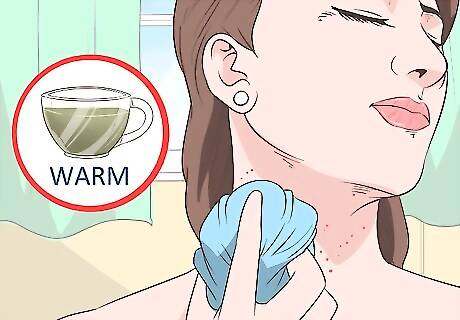
Apply the mixture to your neck. Make sure that the solution is not so hot that it might burn your neck. Allow it to cool down a bit first. Then, you can apply the solution by soaking a clean cotton washcloth in the solution and placing the cloth over your neck. If you only have a few places that you want to treat, then you can dip a cotton swab or cotton ball into the solution and apply it as needed.
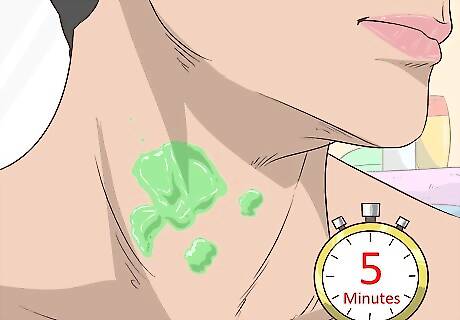
Leave the solution on for about five minutes. Don’t leave the sea salt solution on your skin any longer or it may dry out your skin too much. After time is up, rinse off your neck with lukewarm water and gently dry off your neck with a clean, cotton towel.
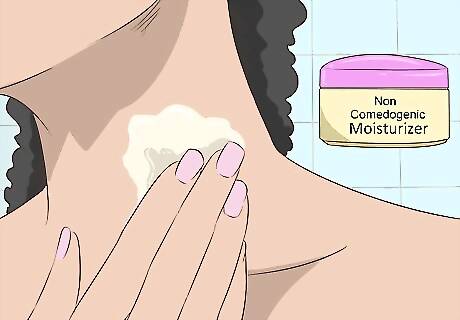
Moisturize your neck. After the sea salt treatment, apply some moisturizer to your neck. Make sure that you use a non-comedogenic moisturizer to avoid making the acne worse.
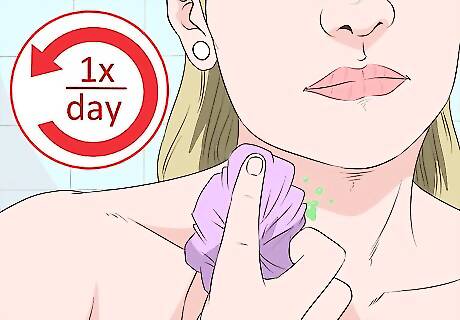
Repeat the sea salt treatment once per day. Do not use this treatment more than once per day or you may dry out your skin too much, even if you moisturize after. Limit yourself to one sea salt treatment per day.
Using an Egg White Mask
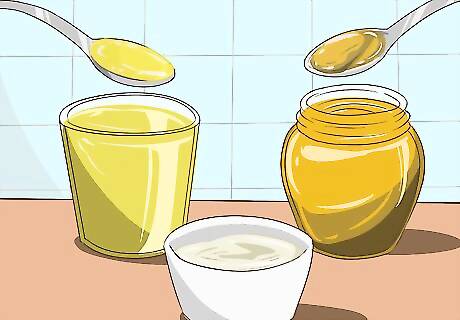
Gather your ingredients. Egg whites might help destroy acne-causing bacteria, absorb excess oil from the skin, and boost skin hydration. You will need: 1/2 tablespoon of dark colored honey (darker honey has more antibacterial properties) 1 egg white (do not use the yolk) Avoid ingredients that may do more harm than good, such as lemon juice or baking soda.

Combine the ingredients in a small bowl. Use a whisk or fork to mix the egg white until it becomes frothy. Add the honey, making sure that everything is well combined. You may add other household items, such as 1 teaspoon of witch hazel (which has anti-inflammatory properties). You can also add a few drops of an anti-acne essential oil like tea tree, eucalyptus, myrtle, lavender, oregano, thyme, or lemon.
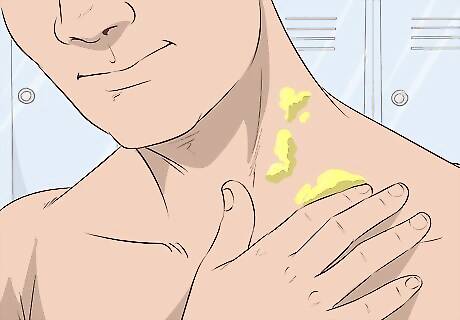
Spread the paste over your neck. If you want to treat your whole neck, then you can use your fingers to spread the paste over your neck. If you want to treat a smaller area, then you can use a cotton swab or cotton ball to spread the paste over specific problem areas.
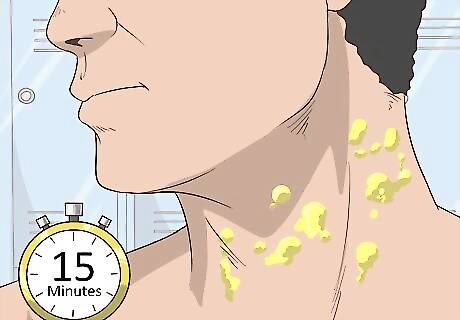
Allow the paste to dry on your neck and then rinse. Leave the paste alone for 10 to 20 minutes, then rinse it away with cold water. You may need to hop in the shower to do this. Use your fingers to break up the paste as you rinse it away. Pat your skin dry and then apply a non-comedogenic moisturizer to complete the treatment.
Treating Neck Acne with Medication
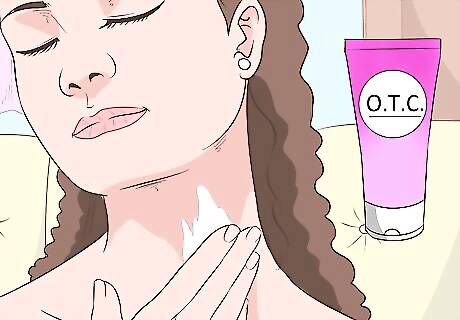
Try over-the-counter treatments. Face washes and topical treatments containing benzoyl peroxide, salicylic acid, sulfur, or resorcinol acid are all effective acne-fighters and are available over-the-counter. You may find products targeted specifically at treating body acne, which may be more effective than products meant to be used on your face. Just make sure you don't forget and use the body product on the delicate skin of your face or the front of your neck.
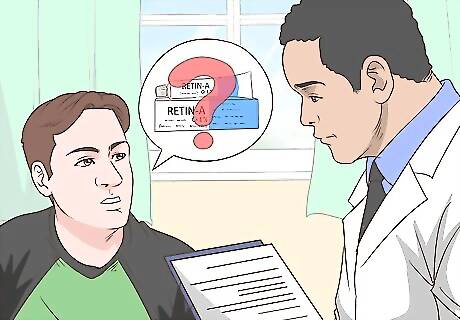
Ask about retinoid creams. Retinoid creams are highly effective at unclogging your pores and eliminating acne. However, you will need to get a prescription from your doctor or dermatologist.

Discuss the use of antibiotics. Your doctor may prescribe a prescription-strength topical antibiotic, such as clindamycin, to apply to your neck, which kills acne-causing bacteria. It may also reduce redness. Apply it twice daily and combine it with benzoyl peroxide, as this can prevent the bacteria from becoming immune to the antibiotic.
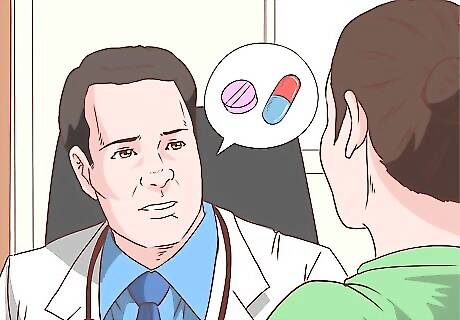
Talk to your doctor about oral contraceptive pills if you are a woman. Oral contraceptives can improve acne in women and teen girls if the acne is related to hormone shifts, such as puberty. Keep in mind that oral contraceptives have side effects, including headaches, breast tenderness, and nausea. They should not be used if you are planning to become pregnant.
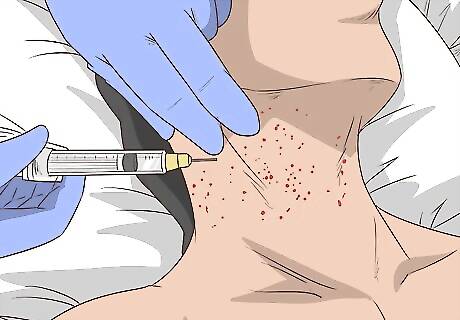
Consider steroid injections for cystic acne. If your dermatologist determines that the acne on the back of your neck is a nodular or cystic lesion, your doctor may decide to inject the lesion directly with a steroid. This can quickly reduce swelling and heal the acne. It may also reduce scarring. Side effects of this treatment include thinning of the skin, increased sensitivity to light, and may temporarily cause the fat under your skin to atrophy, giving the area a "sunken" appearance.
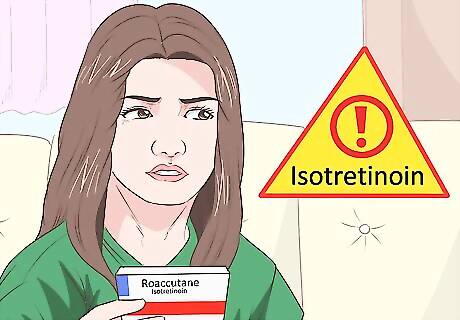
Consider isotretinoin for severe acne. Isotretinoin is a strong medicine that should only be used if other methods of controlling acne fail to work. Isotretinoin can clear up severe acne in a couple of months, but it can also have severe side effects, including: Severe birth defects, miscarriage, or stillbirth Skin dryness and nosebleeds Sun-sensitive skin Worsening acne Night blindness Thinning hair Muscle or joint pain Rash Stomach problems Unhealthy cholesterol levels Liver damage Pressure on the brain, resulting in eyesight problems or death

Look into laser treatments for acne. Laser and other light treatments can help treat acne when combined with another form of treatment, like topical medicine or other light therapies. Patients tend to see the best results 4 to 12 weeks after the last treatment. Keep in mind that multiple treatments deliver better results than a single treatment, and patients often need follow-up treatments once or twice a year.



















Comments
0 comment